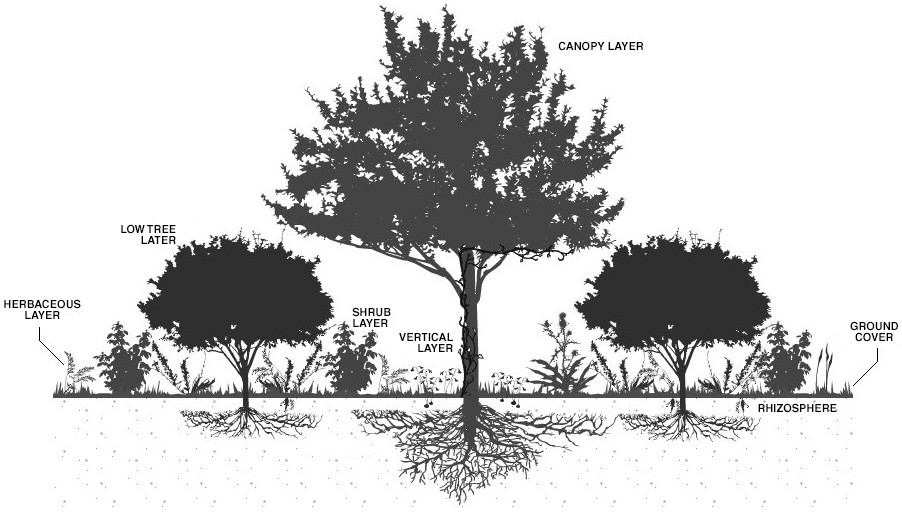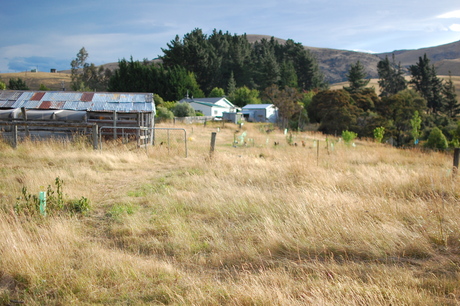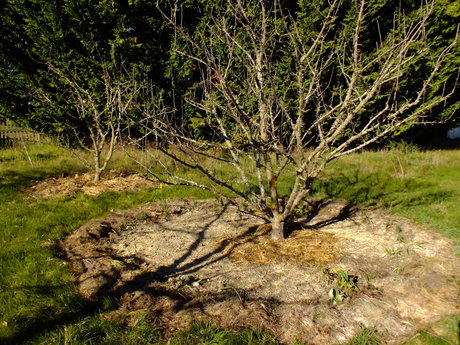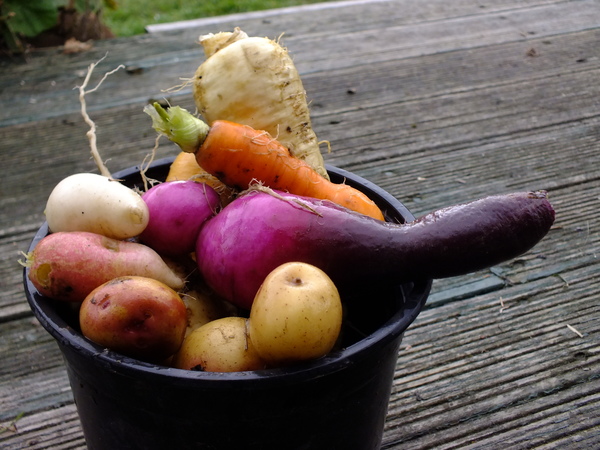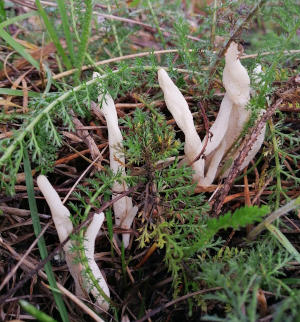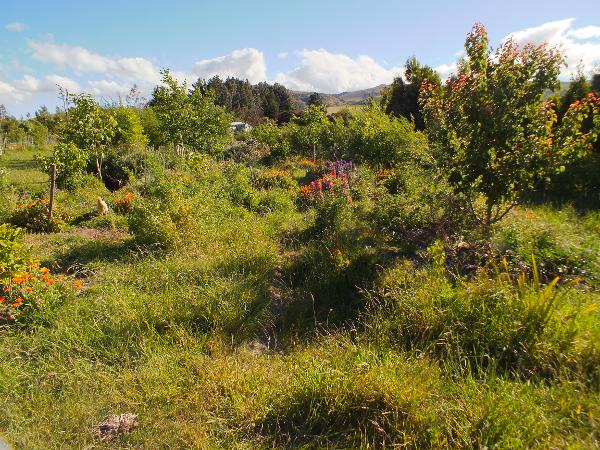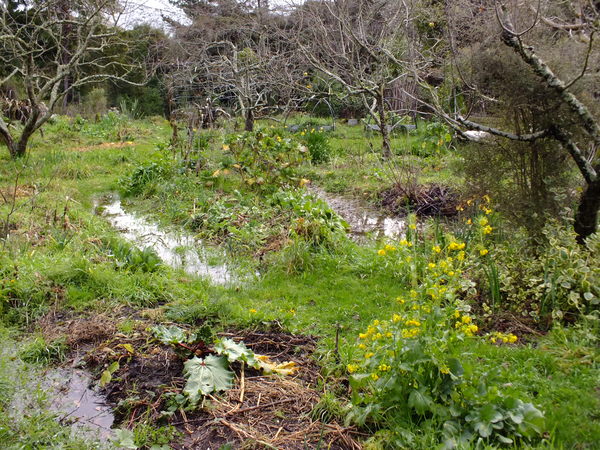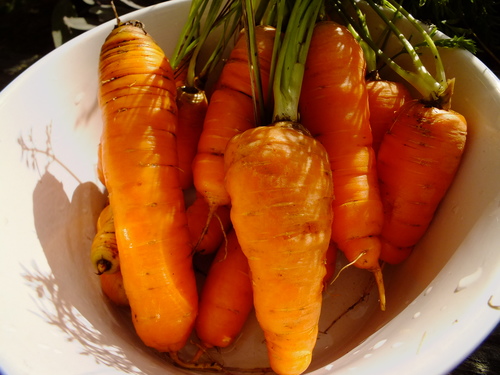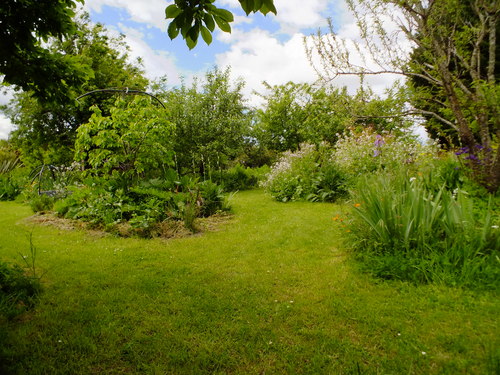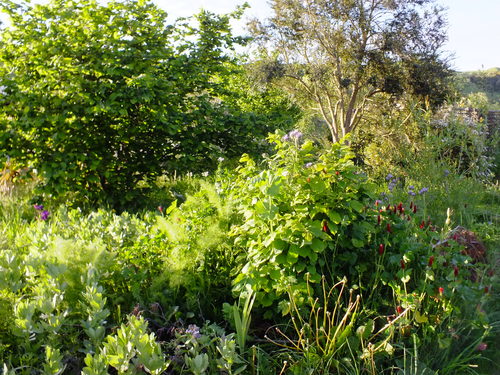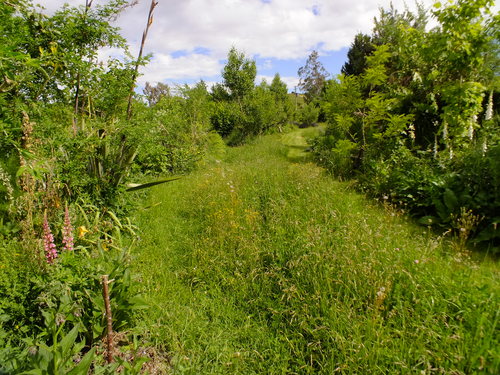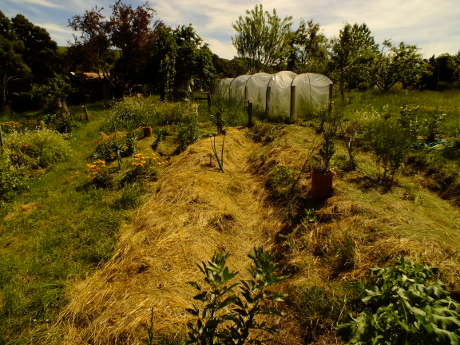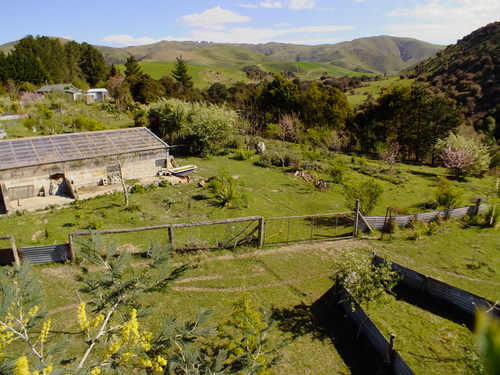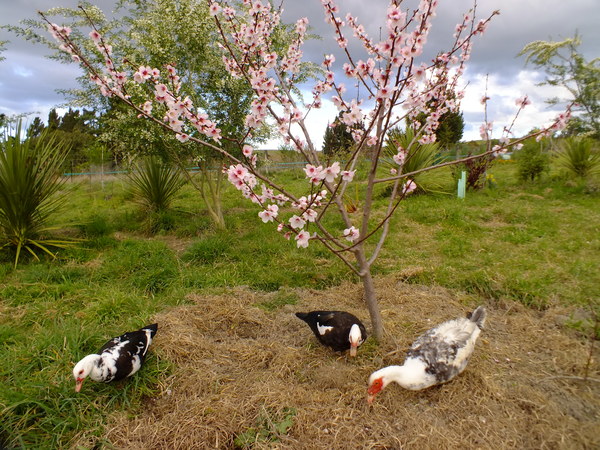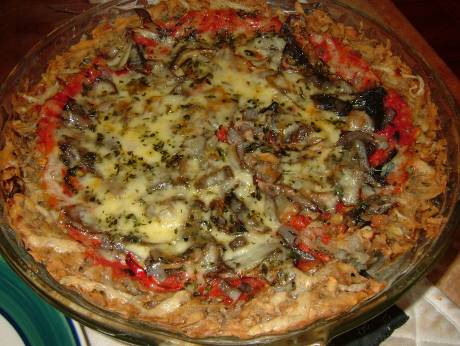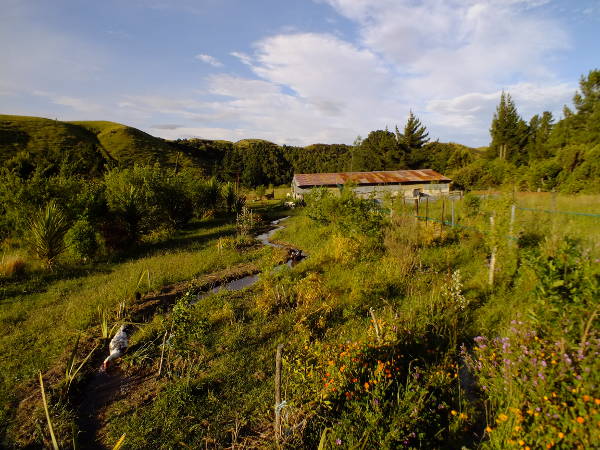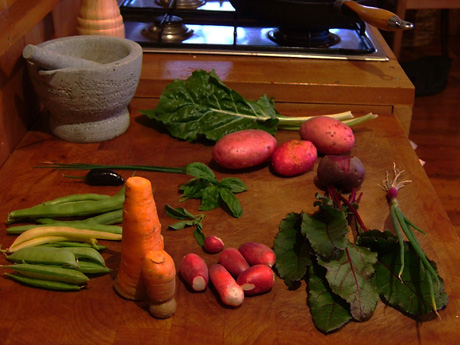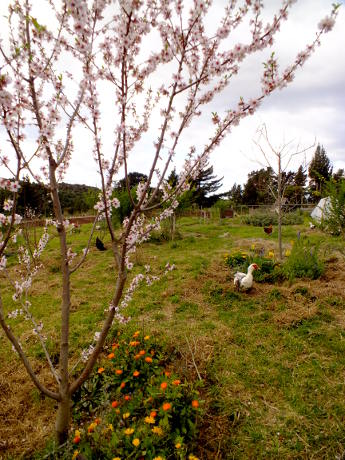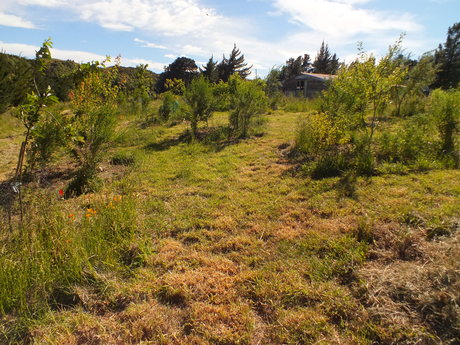Pigs in the young food forest
Our 3 pigs sleep in a long concrete shed, the north side of which is 4 garden beds enclosed in plastic through which the chickens are rotated.
During the day the animals are free to roam up to 1 hectare of emerging food forest which is broken into 8 sections (paddocks) of various sizes.
Many of our pig fences are constructed from short log posts driven into the ground and joined by a horizontal run of old corrugated iron since. An obvious choice since there were stacks of it here. Wire fences will not contain a pig, they can force their way under and through.
We find that by providing plenty of space and regulating their access to different areas means they get plenty of variety, don't over graze and start rooting up the ground or interfering with young trees (much). Limit the number of pigs you have!
During drought and where pasture is poor the pigs will seek out green leaves of pip and stone fruit, willow and possibly some others. Surprisingly they don't interfere with tagasaste.
Unsurprisingly they love fruit. So any young, small trees can be snapped or damaged and branches in reach can be broken, trunks gnawed on in their efforts to reach or dislodge fruit. The best option is to remove all fruit on young trees and remove low branches until the plant is sturdy and above pig height.
September 19, 2016
